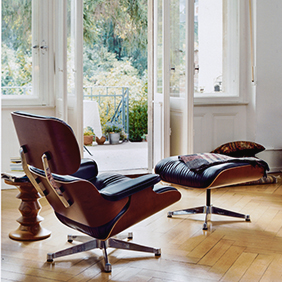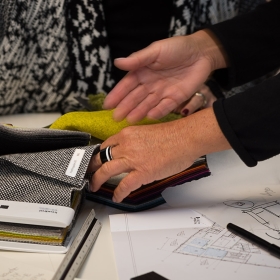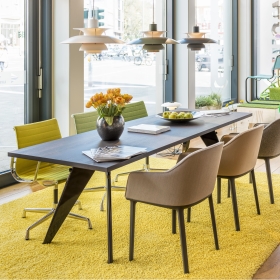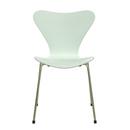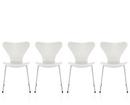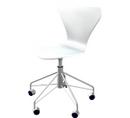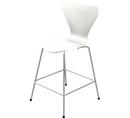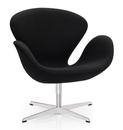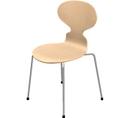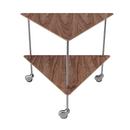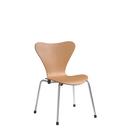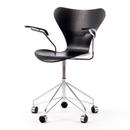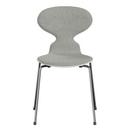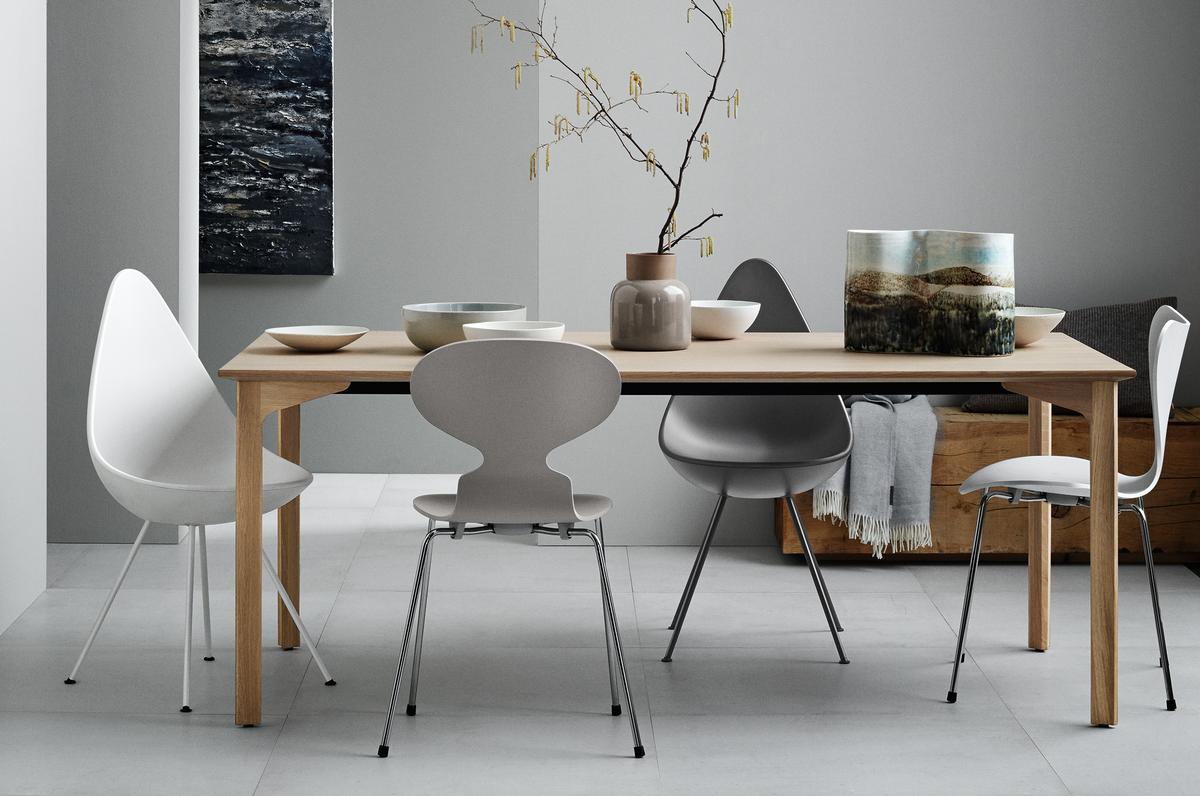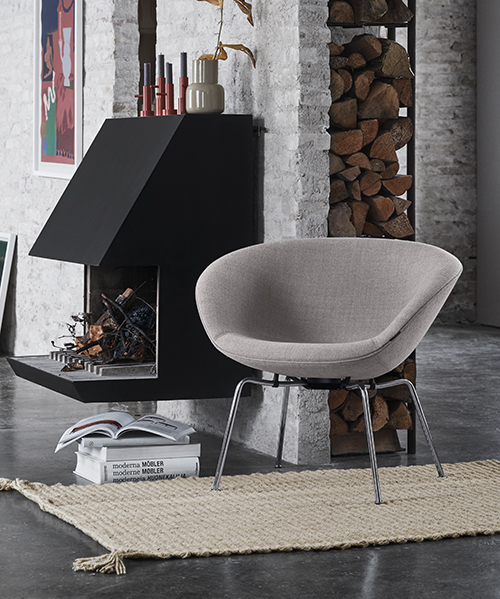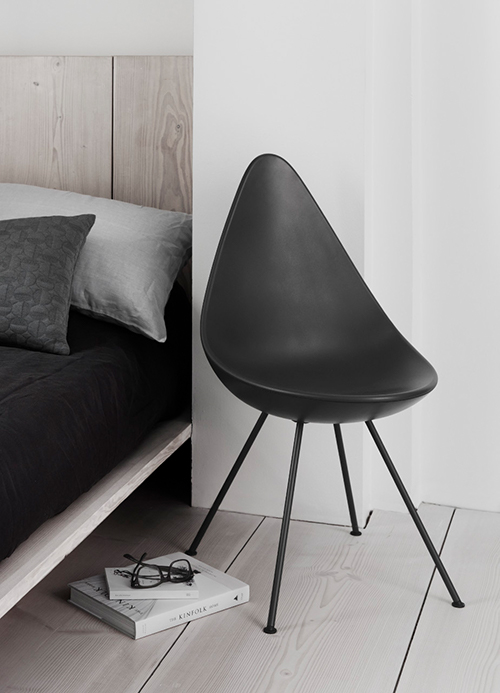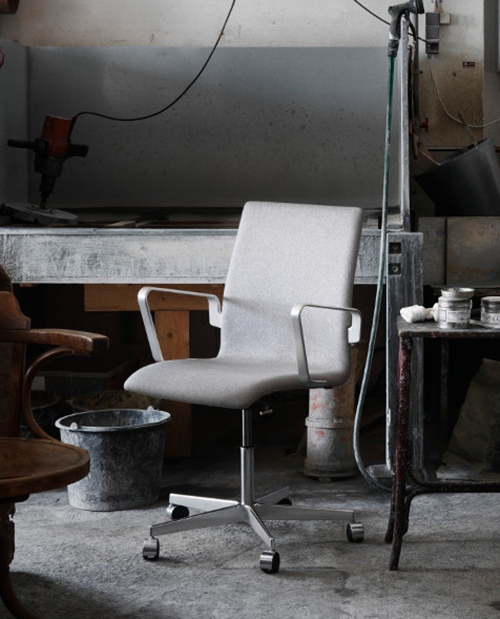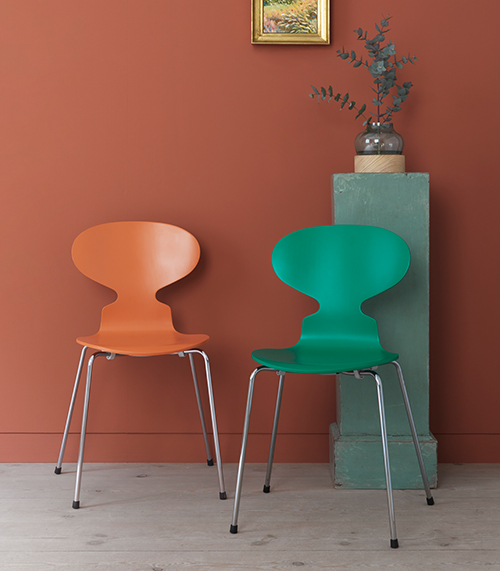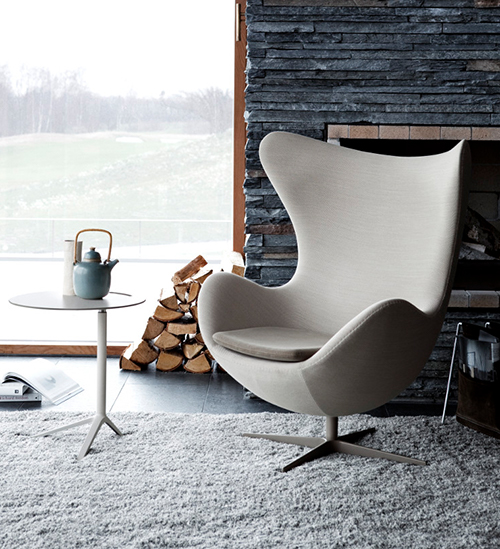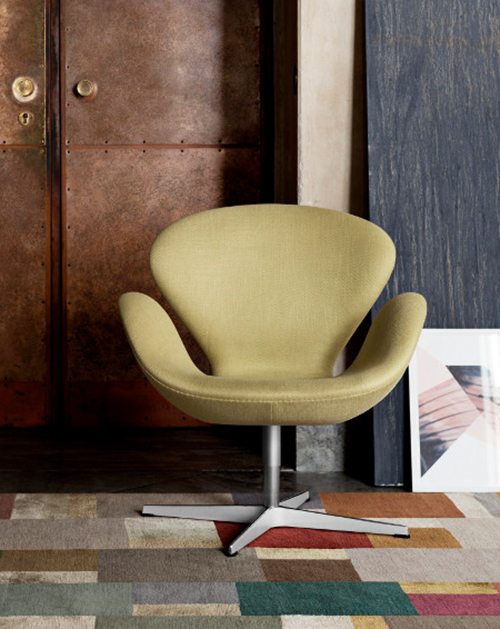Arne Jacobsen Collection
Fritz Hansen & Arne Jacobsen - The Success Duo
Named after its founder Fritz Hansen was founded in 1872 as a carpenter's workshop; however quickly became an integral part of the Danish furniture industry and with its Scandinavian design focus gained great recognition beyond the borders of Denmark. This success can be traced back to extraordinary high quality technical know-how and the acquaintance with Arne Jacobsen. Born on February 11, 1902 in Copenhagen, Jacobsen aspired to be a painter, but his father encouraged him towards architecture and design. Arne Jacobsen developed his first prototypes in his garage and finally found a producer for his works in Fritz Hansen. The company, which was always interested in working with architects and designers to expand its portfolio, was immediately impressed by the sleek, functional shapes that blended harmoniously thanks to innovative techniques and modern materials. This initial contact subsequently resulted in numerous furniture classics that have decisively shaped the history of furniture design.
Ant, 1952
Inspired by the successful designs of the American designers Charles and Ray Eames Fritz Hansen commissioned Arne Jacobsen to create a similar plywood chair: the result being the Ant. The Danish manufacturer had been experimenting with the three-dimensional deformation of plywood since 1872 and used the method for the first time for the realisation of the Ant, whose back and seat consist of one piece. The Arne Jacobsen chair was named after its characteristic shape, which is reminiscent of the insect's body. Originally equipped with three legs, the Fritz Hansen design classic is today also produced in a four leg version.
Series 7, 1955
The Series 7 Chair 3107 was designed by the architect and designer Arne Jacobsen in collaboration with the Danish manufacturer Fritz Hansen and, with more than 5 million chairs sold since the 1950s, is one of the most commercially successful ever furniture designs. With the Series 7 chair, which is a classic representative of Scandinavian design, Jacobsen used the then innovative technique of layer bonding. With the help of steam, it was finally possible to bring wood panels into the desired shape, and thereby allowing for an object characterised by its low weight, stackability and which is available in numerous varied versions including with or without armrests, as an office swivel chair, bar stool or as a Series 7 children's chair.
Egg Chair, 1958
Like many of his furniture designs, Arne Jacobsen originally designed the Egg Chair for the SAS Royal Hotel in Copenhagen. The classic lounge chair, which owes its name to its generous shape reminiscent of half an egg, looks almost sculptural with its imposing appearance. The seat shell of the Fritz Hansen Egg Chair unites the seat and backrest, headrest and armrests, allowing the user to assume various sitting positions and to feel comfortably protected. Thanks to the organic shape without hard edges or breaks in the lines, the Arne Jacobsen design classic looks harmonious and noble. The Fritz Hansen Egg is made of plastic upholstered with cold foam and is available in numerous fabric and leather versions. As an addition to the Egg, the matching Egg Footstool is also available, and which brings extra comfort to the lounge chair.
Swan Chair, 1958
The Swan Chair is also part of Arne Jacobsen's original design of the SAS Royal Hotel in Copenhagen, where it was used in particular in the lobby and in the business sector. Just like the Egg Chair, the swan impresses with its organic, curvy shape and does without strict, straight lines and edges. While the spacious seat shell of the Fritz Hansen design classic is made of plastic upholstered with cold foam, the base frame is made of satin-polished aluminium, creating a pleasant material contrast. As an absolute classic of Scandinavian design, the Swan Chair is represented in various museums worldwide, eg. in the Design Museum Denmark in Copenhagen, MoMA New York and the National Gallery of Victoria in Melbourne. The first original copies of the Swan are regularly auctioned by renowned art auction houses. As part of the Documenta III in 1964, the Fritz Hansen armchair was exhibited together with other work by Arne Jacobsen in the field of industrial design. To this day, the legendary design furniture adorns important public institutions and is regularly used for scenography in films.
Pot, 1959
The Fritz Hansen Pot armchair was designed for the interior of the SAS Royal Hotel in Copenhagen, one of Arne Jacobsen's most significant projects. The building was intended to be a work of art from architecture to interior design. With their soft organic shapes, the design classics Pot, Egg and Swan are an exciting contrast to the hotel's more minimalist, straightforward style. A work that has long stood in the shadow of Jacobsen's Egg Chair or Swan Chair, the Fritz Hansen re-edition of the Pot with new, reworked materials that meet the current demands of sustainability and comfort mean that the original Arne Jacobsen chair impresses anew with its timeless elegance and thus can bewitch a new generation of design fans. As a work the relatively low Pot chair is ideal for the living room or the entrance area.
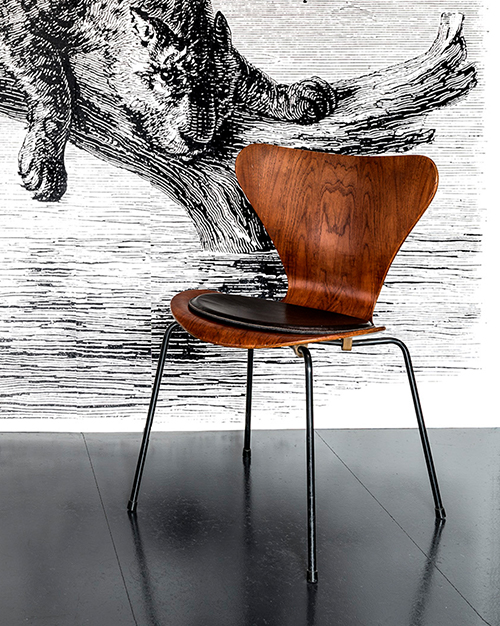
Series 7 from Fritz Hansen
Drop, 1958
The Drop Chair was Arne Jacobsen's favourite chair because his wife always used it in combination with her make-up table. The extraordinary shape of the design chair brought out the lady's shoulders and silhouette, and while she sat in front of her mirror, Jacobsen could admire her back and look her in the eye. Originally the Drop chair was designed for the rooms of the SAS Royal Hotel in Copenhagen, a project that Arne Jacobsen realised in the 1950s. Today, the Fritz Hansen chair is in room 606 of the hotel, whose interior corresponds to the original furnishings of the time. The Drop Chair is available in a range of fabric and leather variants as well as with a range of bases and cuts a good figure both as dining chair or in the kitchen.
Oxford Chair, 1962
The Oxford Chair was designed in 1962 by Arne Jacobsen for the St. Catherine's College in Oxford. At that time, two variants were launched: the high-back version was intended for the teaching staff, while the lower backed office chairs were to be used by the students. Although the higher version is associated with a certain prestige, the Oxford Chair fits perfectly into a variety of areas. The Arne Jacobsen chair is made of layer-glued, moulded veneer and is still available in different sizes and configurations as well as with various fabric or leather upholstery. The Fritz Hansen design classic not only impresses with its elegant appearance, but also features numerous technical refinements. Jacobsen even received an honorary doctorate for his design.


